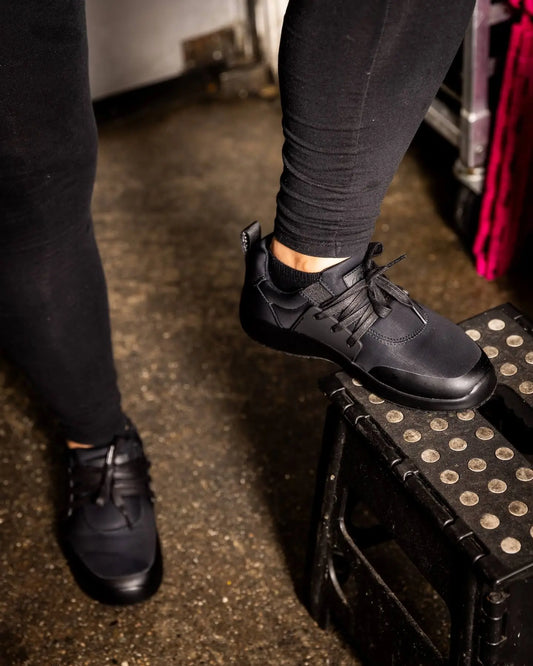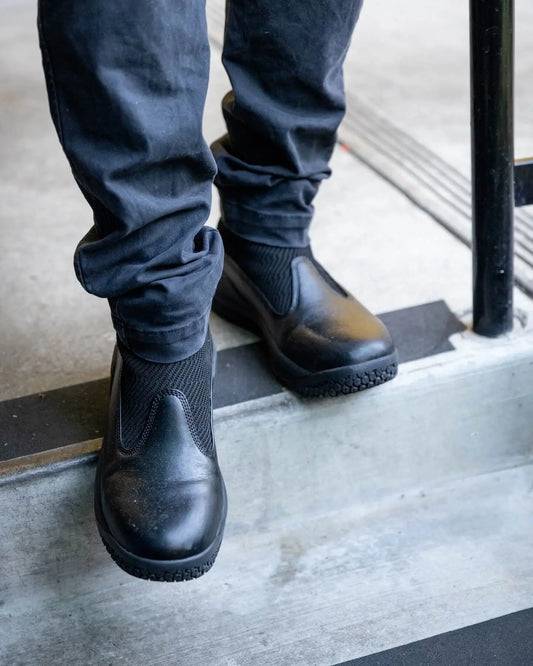4 Common Chef Injuries
Alex Kinejara
Professional kitchens around the United States, from New York City to Los Angeles to Miami and beyond, are run with military-like precision. From the Executive Chef at the top to the Sous chef and wait staff—everything is timed precisely, with each person contributing to the whole operation.
A chef’s kitchen can be an environment of life, spontaneity, and tasty culinary creations. But they can also be spaces of kitchen hazards where accidents frequently occur—a burn injury, cuts, or even broken bones.
The good news is that most kitchen accidents are avoidable. By diving into the five most common chef injuries, we’ll detail what you can do to remain healthy and safe while in the kitchen.
#1 Slips, Trips, and Falls
If you’ve ever worked in a restaurant kitchen, you know how slippery the floors can become and how easily kitchen accidents can occur without warning. After all, kitchens normally feature a delicious array of bubbling hot liquids, beverage stations, and (not-so-delicious) mops.
Many kitchen floors may also need to be washed before and after service. You might even need to clean your floors during service if you spill food or liquid. The water used to clean your floors can cause you to slip.
The following objects may clutter many restaurant kitchens, creating trip and fall hazards:1
- Protruding boxes
- Wires and gas lines
- Cracked and uneven floors
- Bulky equipment
These objects can cause you to slip, trip, and fall. As a result, non slip kitchen shoes can give you a big advantage in the kitchen. Slip-resistant shoes can provide the traction, stability, and comfort you need to navigate a kitchen’s often slippery conditions.
Furthermore, compression socks can promote proper blood flow and help keep your legs and feet feeling fresh. That way, you don’t have to worry about tripping over boxes and broom handles when your feet are fatigued.
A trip and fall accident is a common kitchen accident, resulting in minor bruising, sprains, or more severe injuries like a broken arm, leg fractures, or broken bones.
#2 Burns
Burns are possibly the most common kitchen accident in professional kitchens. Flames and modern kitchens go together like peas and carrots. That’s because many chefs still cook food over open flames. Consequently, burns are common in the restaurant industry.
Although some burns are minor, others can cause you to miss significant time from work. Some may even be life-threatening. According to the Bureau of Labor Statistics, in 2017, 6,910 industry workers lost work time due to kitchen burns.2
To avoid burns in restaurant kitchens, it’s essential to be aware of:
#3 Foot Sprains and Injuries
Many chefs spend a large portion of each day on their feet. After all, restaurant work can be both energetic and hectic. Chefs and kitchen staff can sometimes walk several miles a day between their freezers, food preparation areas, and kitchen lines.
As a result, many chefs and kitchen staff can experience foot sprains and other injuries. Hallux rigidus, also known as turf toe, is an especially common foot injury.
In short, hallux rigidus is a form of degenerative arthritis. Many doctors believe excessive stress on the toe joints can lead to this condition. Symptoms of hallux rigidus include:3
- Decreased toe motion
- Swollen and inflamed toes joints
- Toe pain and stiffness
- Bunions and calluses
In addition to hallux rigidus, common kitchen-related foot injuries include:
- Plantar fasciitis
- Sprains
- Breaks
- Bruises
Preventing foot injuries typically starts with finding the right shoes and socks. The best work footwear is usually designed for people who work on their feet all day. As a result, this footwear features:
- Long-lasting materials
- Custom-formulated insoles
- Slip-resistant bases
These attributes can help prevent excessive foot and toe stress.
Another way to prevent foot injuries is to or practice exercise for chefs regularly.
#4 Cuts and Scrapes
From chopping onions to slicing steaks, chef work often involves very sharp knives. As a result, many chefs and kitchen staff occasionally cut themselves. While most cuts are minor, some cuts can be severe injuries.
It may seem counterintuitive, but dull knives can actually pose more risks than sharp knives. That’s because dull knives can be harder to work with. Consequently, chefs and kitchen staff may hold and use their dull knives awkwardly to get the best cut. That said, sharp knives can still be dangerous.
In addition to knives, the following kitchen equipment can cut you:
- Potato peelers
- Can openers
- Sharp boxes and counters
- Wine openers
Educating yourself on proper knife work is one of the best ways to prevent cuts and scrapes. You should also make sure to clock in enough sleep before working with sharp objects so that you’re mentally focused.
Help Avoid Chef Injuries with Snibbs
The modern restaurant kitchen has several health risks, from wet floors to searing flames. Fortunately, you don’t have to leave everything to chance. That’s because our slip-resistant work shoes can provide the comfort, stability, and support you need to power your way through your next shift.
As a chef, you’re known for your comforting food. Let Snibbs help make every step around the kitchen just as comfortable.
Sources:
- Chef’s Pencil. The Most Common Injuries for Kitchen Staff. https://www.chefspencil.com/the-most-common-injuries-for-kitchen-staff/
- SFM. Preventing and responding to burns in kitchen environments. https://www.sfmic.com/preventing-and-responding-to-burns-in-kitchens/
- Cleveland Clinic. Hallux Rigidus. https://my.clevelandclinic.org/health/diseases/14665-hallux-rigidus














